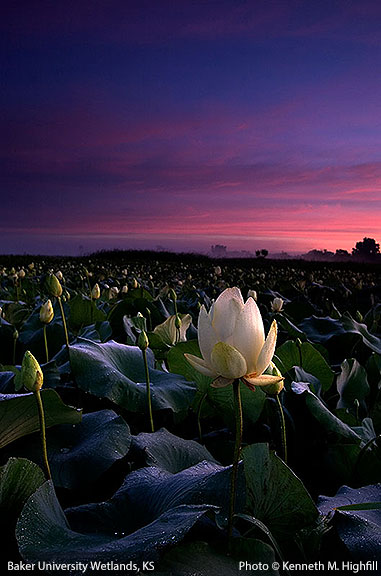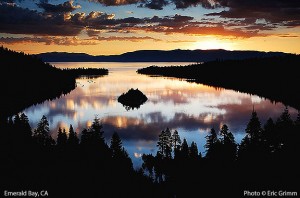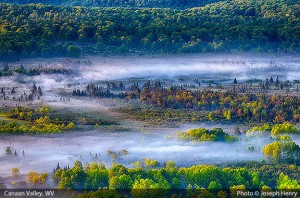
Kansas, who knew? Instead of the usual sunflowers, a striking photograph of American Lotus (Nelumbo lutea) at dawn in the Great Plains is the top winner in the 2013 National Natural Landmarks Program Photo Contest. The competition is sponsored by the National Natural Landmarks (NNL) Program of the National Park Service, which promotes conservation of sites that contain outstanding biological and geological resources, regardless of landownership type. Nearly 600 sites have been recognized for their outstanding condition, illustrative value, rarity, diversity, and value to science and education.

One of those 600 sites is the Baker University Wetlands, designated a National Natural Landmark in 1969 as an example of undisturbed wetland prairie, where Kenneth M. Highfill of Lawrence, Kan. captured the winning image. More than 260 species of birds and more than 430 species of plants have been recorded at the site.
“These stunning photographs highlight the beauty and variety of our nation’s natural landscape,” said National Park Service Director Jonathan B. Jarvis. “They celebrate the great diversity, significance and beauty of our nation’s natural history, and underscore the importance of resource preservation by our partners across the country.”

The 10th annual contest drew 88 images representing 71 different National Natural Landmark sites across 31 states and Puerto Rico. Second place went to Eric Grimm of San Diego, Calif. for his photo of a reflected sunrise at Emerald Bay at Lake Tahoe, and third place went to Joseph Henry of Davis, W.V. for his image of the Canaan Valley in northeastern West Virginia. The three winning photos and 10 honorable mentions will be featured in the 2014 National Natural Landmarks calendar.
Where’s your nearest National Natural Landmark? Check the list (current to 2009) here.